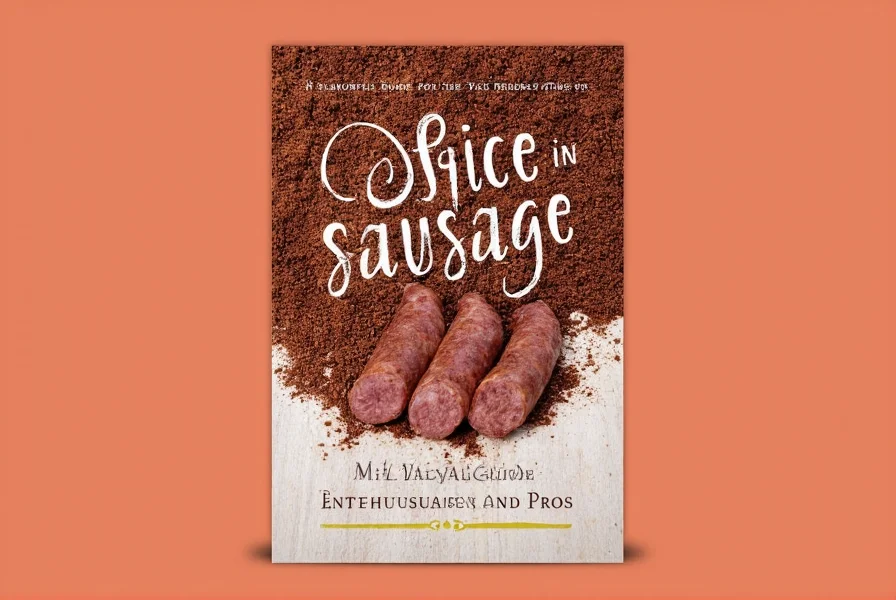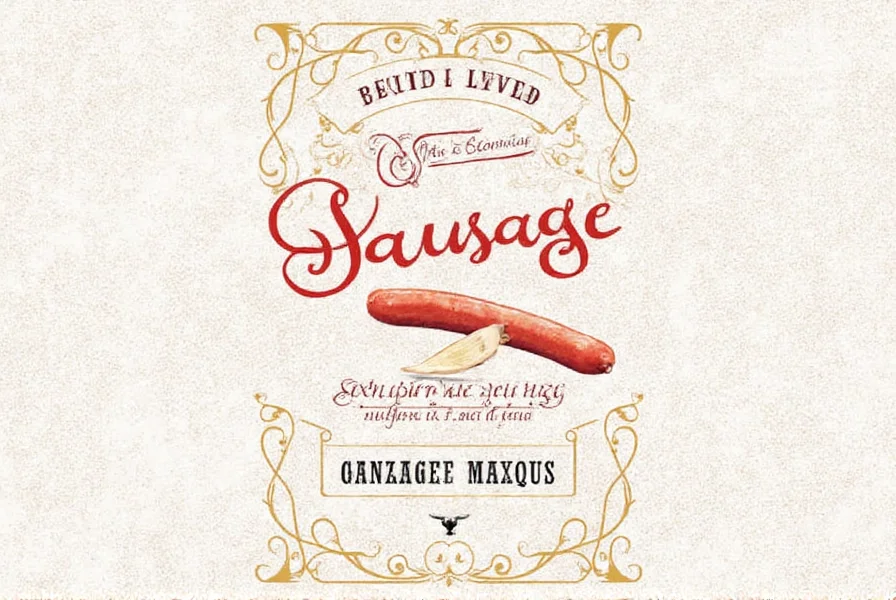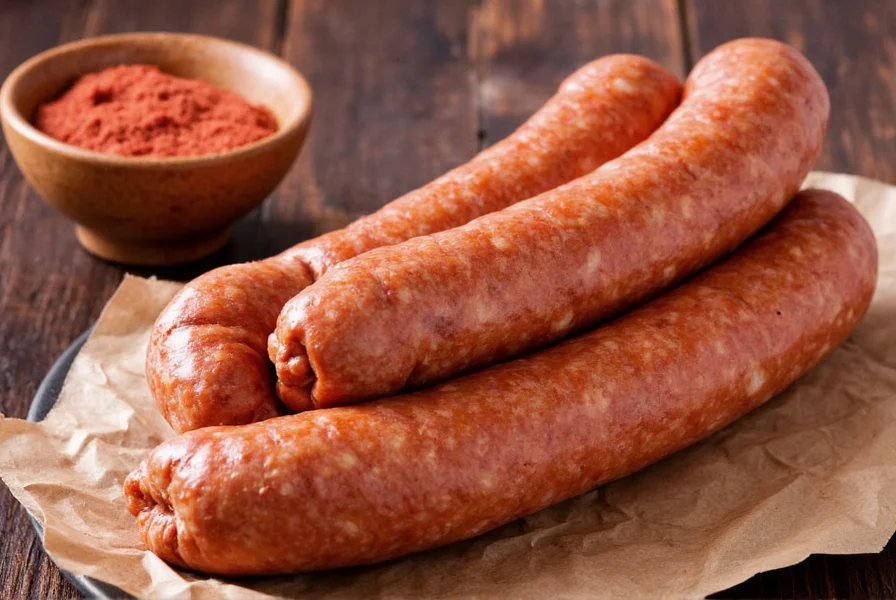Table of Contents
- Exact Spice Ratios Per Pound of Meat (Most Searched Information)
- Why Proper Spice Measurement Matters in Sausage Making
- Common Spices Used in Sausage: Complete Reference Guide
- Spice Recipes for Different Sausage Styles (10-Pound Batch Measurements)
- Frequently Asked Questions (Answered by Sausage Professionals)
- Buying Guide: Choosing the Right Spices for Perfect Sausage
- Conclusion
What is the exact spice ratio per pound of meat for perfect sausage?
The professional standard is 1.5-2% of total meat weight in seasoning blend. For a 1-pound batch, this equals precisely 0.24-0.32 ounces (7-9 grams) of total spice mixture. For a 5-pound batch (80 ounces), use 1.2-1.6 ounces (34-45 grams) of seasoning. This ratio ensures balanced flavor without overpowering the meat. Higher fat content requires slightly more seasoning as fat mutes flavors. Always test with a small cooked patty before making a full batch.
Exact Spice Ratios Per Pound of Meat (Most Searched Information)
When searching for sausage spice information, the #1 question is "how much spice per pound of meat?" Professional sausage makers use a precise 1.5-2% seasoning ratio based on total meat weight. Here's the exact measurement you need:
| Meat Weight | Total Spice Weight (Ounces) | Total Spice Weight (Grams) | Tablespoons |
|---|---|---|---|
| 1 pound (16 oz) | 0.24-0.32 oz | 7-9 g | 1.5-2 tsp |
| 5 pounds (80 oz) | 1.2-1.6 oz | 34-45 g | 7-9 tbsp |
| 10 pounds (160 oz) | 2.4-3.2 oz | 68-90 g | 14-18 tbsp |

This precise ratio is critical because too little spice creates bland sausage, while too much overwhelms the meat flavor. Professional sausage makers weigh their spices rather than measuring by volume for consistent results. If using a scale isn't possible, remember that 1 ounce of most spice blends equals approximately 6 tablespoons. Always test your seasoning mix with a small cooked patty before committing to a full batch.
Why Proper Spice Measurement Matters in Sausage Making
Getting spice measurements exact transforms ordinary sausage into exceptional. Beyond flavor, precise spice ratios affect preservation, texture, and shelf life. Under-seasoned sausage lacks complexity and can taste flat, while over-spiced sausage creates an unbalanced product where no single flavor shines through.
Professional sausage makers know that different meat types require slight ratio adjustments. Pork fat content typically needs 1.8% seasoning, while leaner venison requires 2.2% to achieve balanced flavor. The fat in meat actually absorbs some spice compounds, which is why higher fat content requires slightly more seasoning to achieve the same flavor intensity.

Common Spices Used in Sausage: Complete Reference Guide
Understanding each spice's role helps you create perfectly balanced sausage. Here's the industry-standard reference for sausage spices with precise usage rates:
| Spice | Primary Function | Standard Usage Rate | Special Considerations |
|---|---|---|---|
| Paprika (Sweet) | Color, mild sweetness | 0.3-0.5% of meat weight | Provides vibrant red color without heat |
| Cayenne Pepper | Heat control | 0.05-0.15% of meat weight | Measure precisely - small changes dramatically affect heat |
| Cumin | Earthy base note | 0.2-0.4% of meat weight | Toast before use for maximum flavor extraction |
| Fresh Garlic | Signature aroma | 0.8-1.2% of meat weight | Minced, not powdered, for authentic flavor |
| Coriander | Citrus note, balances fat | 0.15-0.25% of meat weight | Essential for authentic Polish kielbasa |
| Black Pepper (Whole) | Complex heat | 0.2-0.35% of meat weight | Grind fresh just before mixing for best results |

Spice Recipes for Different Sausage Styles (10-Pound Batch Measurements)
Here are professional-grade spice formulas with exact measurements for 10-pound batches:
Authentic Italian Sausage (Sweet Version)
Total seasoning: 2.8 ounces (79 grams) - precisely 1.75% of meat weight
- 1.4 oz (40g) fresh garlic, minced (0.875%)
- 0.56 oz (16g) fennel seeds, crushed (0.35%)
- 0.42 oz (12g) sweet paprika (0.26%)
- 0.28 oz (8g) salt (0.175%)
- 0.14 oz (4g) black pepper, freshly ground (0.0875%)
Mexican Chorizo (Traditional Recipe)
Total seasoning: 3.2 ounces (91 grams) - precisely 2% of meat weight
- 1.28 oz (36g) guajillo chili powder (0.8%)
- 0.8 oz (23g) cumin, toasted and ground (0.5%)
- 0.64 oz (18g) fresh garlic, minced (0.4%)
- 0.32 oz (9g) white vinegar (for moisture balance) (0.2%)
- 0.16 oz (4.5g) salt (0.1%)
German Bratwurst (Nürnberger Style)
Total seasoning: 2.4 ounces (68 grams) - precisely 1.5% of meat weight
- 0.96 oz (27g) fresh marjoram, finely chopped (0.6%)
- 0.64 oz (18g) fresh parsley, finely chopped (0.4%)
- 0.48 oz (14g) fresh lemon zest (0.3%)
- 0.24 oz (7g) mace, freshly grated (0.15%)
- 0.08 oz (2g) cardamom, freshly ground (0.05%)

Frequently Asked Questions (Answered by Sausage Professionals)
What are the most essential spices for sausage making?
The most essential spices for sausage making include garlic, salt, black pepper, and paprika. These form the foundation for most sausage recipes. Garlic provides that signature savory depth, salt is crucial for both flavor and preservation, black pepper adds complexity and mild heat, while paprika contributes color and can range from sweet to smoky to hot depending on the variety you choose. The professional standard is 0.8-1.2% fresh garlic, 0.15-0.25% salt, and 0.1-0.2% black pepper based on total meat weight. While specialty sausages might require additional spices like fennel for Italian sausage or cumin for chorizo, these four basics properly measured will serve you well for most sausage varieties.
How much spice should I use in sausage?
The professional guideline is to use 1.5-2% of the total meat weight in spices, with precise measurements varying by sausage type. For a 5-pound batch of sausage (80 ounces), this translates to exactly 1.2-1.6 ounces (34-45 grams) of total spice mixture. Critical tip: weigh your spices rather than measuring by volume for consistent results. For example, 1 ounce of paprika equals approximately 6 tablespoons, but this varies by spice density. Always test with a small cooked patty first: mix 1 tablespoon of your seasoned meat, cook it, and taste it before committing to a full batch. Remember that fat content affects spice perception; higher fat sausages may require up to 2.2% seasoning as the fat can mute flavors.
Should I use fresh or dried spices for sausage making?
For professional-quality sausage, fresh garlic and herbs are preferred over dried versions for superior flavor. The exact professional standard is 0.8-1.2% fresh garlic by meat weight versus 0.3-0.5% if using garlic powder. Fresh herbs should constitute 0.4-0.7% of meat weight, while dried herbs require only 0.15-0.25% due to their concentrated nature. Critical exception: spices like paprika, cumin, and black pepper work better in dried form as their essential oils are more stable. If using fresh spices, account for moisture content—excess water can affect texture and preservation. For consistent results in home sausage making, weigh all spices rather than measuring by volume.
Can I adjust spice levels to personal taste?
Absolutely, but with precise methodology. Start with professional ratios (1.5-2% total seasoning by meat weight) as your baseline, then adjust incrementally. Professional sausage makers use a test patty method: mix 1 tablespoon of seasoned meat, cook it, and evaluate. For heat adjustments, increase cayenne by 0.02% increments; for herbal notes, adjust by 0.05% increments. Remember that flavors meld during the 24-hour refrigeration period, so what tastes slightly under-seasoned raw may be perfect after processing. Never exceed 2.5% total seasoning as this negatively impacts texture and preservation. Document your adjustments for future batches—precise measurements ensure consistent results.
How do I prevent spices from burning during cooking?
Spices incorporated into the sausage mixture won't burn during normal cooking as they're protected by the meat matrix. The professional cooking method is crucial: start sausages in cool oil (325°F/163°C) and gradually increase to 375°F (190°C), turning frequently. Never cook sausages from frozen as this requires higher heat that can scorch surface spices. For grilling, use a two-zone fire with indirect heat for 80% of cooking time before finishing over direct heat. If using additional dry spices as a finishing rub, apply them during the last 2 minutes of cooking. Professional sausage makers avoid high-heat searing methods as they can char surface spices without properly cooking the interior.
Buying Guide: Choosing the Right Spices for Perfect Sausage
Professional sausage makers prioritize these specific spice characteristics:
Critical Buying Criteria for Sausage Spices
- Precision packaging: Choose spices sold by weight (grams/ounces), not volume, for consistent results
- Freshness indicators: Look for roast dates on coffee-like packaging, not just 'best by' dates
- Particle size: For sausage, medium grind (0.5-1mm) provides optimal flavor release without texture issues
- Moisture content: Professional standard is 8-10% moisture for optimal preservation and flavor
Recommended Brands by Sausage Type
- Italian Sausage: Penzeys Spices 'Italian Seasoning' (pre-mixed with exact ratios)
- Mexican Chorizo: La Morena Guajillo Chili Powder (specifically labeled for chorizo)
- German Bratwurst: Salus Fresh Herb Mix (refrigerated section for optimal freshness)
- All-Purpose Base: King Arthur Spice Scale (digital scale measuring to 0.05g precision)

Conclusion
Mastering sausage spice ratios transforms good sausage into exceptional. The professional standard of 1.5-2% seasoning by meat weight, precisely measured by weight rather than volume, is the key to consistent, restaurant-quality results. Remember to weigh your spices, test with small patties, and allow 24 hours for flavors to meld before cooking.
Whether making Italian sausage, chorizo, or bratwurst, the exact measurements provided in this guide will ensure perfectly balanced flavor every time. The difference between amateur and professional sausage making comes down to precision in spice measurement—apply these standards, and you'll create sausages that impress even discerning palates.
The exact spice ratio per pound of meat is the secret that transforms ordinary sausage into extraordinary flavor.











 浙公网安备
33010002000092号
浙公网安备
33010002000092号 浙B2-20120091-4
浙B2-20120091-4